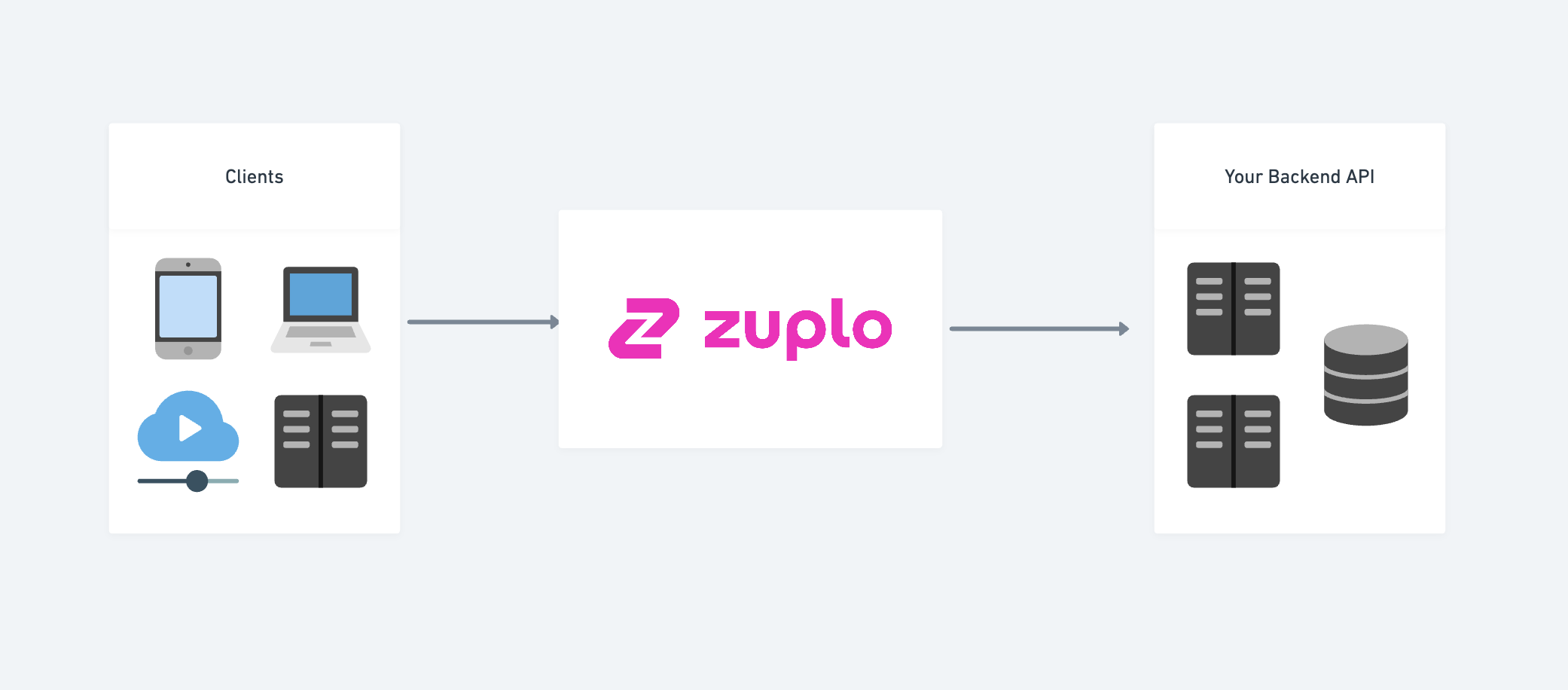Introduction
Zuplo in your stack
Zuplo is a fully-managed, serverless gateway that runs at the edge, in over 200 data-centers around the world. This has a number of advantages as a gateway including:
- extreme redundancy and high availability built-in
- within 50ms of everybody on earth (amazing cache performance)
For this reason we consider the platform to be multi-cloud and have customers with backends in AWS, Azure, GCP and private data-centers. We have multiple options for securing connectivity between Zuplo and your backend API documented here: Securing your backend.
Zuplo typically sits between your clients and your backend (or origin) API. Your clients could be other servers, mobile devices, browsers running websites or IoT devices. The traffic is proxied through the Zuplo gateway where you can enforce protections like rate-limiting and authentication, validate requests before they hit your backend and much more.

We also have customers that have globally distributed backends (hosted by multiple clouds). In this case, customers have deployed Zuplo and route to the nearest data-center.

Protocols#
Zuplo can proxy any HTTP traffic and works well with REST, GraphQL, Web-Sockets and other HTTP protocols (we have customers proxying SOAP over HTTP too). HTTP 2 is supported.
Languages#
Zuplo is configured using JSON configuration files and can be easily extended using TypeScript / JavaScript. Your backend can be written in any language - we have customers with backends coded in Go, C, Node, .Net, etc. As long as it communicates via HTTP, Zuplo is a great choice.
Integrations#
We have support for integrations with Datadog (for monitoring, logging), GCP Cloud Logging and are adding new integrations on demand for customers quickly. Contact us if you need an integration that you don't see.
Runtime#
The Zuplo runtime is built on Web Worker technology - this is a server runtime based on web standards that supports JavaScript and WASM code, and is used by other services like Deno Deploy, Fastly, CloudFlare Workers and Vercel Edge Functions.
This has several advantages including close to 0ms startup time for new nodes increasing both API performance, throughput and scalability.
This makes Zuplo's extensibility easy to use as the concepts are the same as browser scripting and well documented on platforms like MDN (e.g. Response Web API) and are discussed in depth on platform like stackoverflow.
Isolation#
All Zuplo runtimes and customer code execution is safely isolated (each project, even within the same customer account is fully isolated). Edge deployments run on web worker technology (on the cloudflare network by default) which provides high isolation guarantees.
Performance and latency#
Zuplo handles billions of request every month for our customers and has been load tested to comfortably exceed 10,000 requests per second (including API key security, rate-limiting and other policies).
Zuplo adds minimal latency to your backend - typically milliseconds, depending on the complexity of your gateway. Our policies are highly tuned to reduce latency and are adjustable to optimize for different scenarios.
Multi-cloud#
Many zuplo customers connect with services in Azure, AWS, GCP and even running on raw metal in colo locations. Our unique edge deployment profile means we work great with your API wherever it is and have a selection of options for securely connecting to your backend.